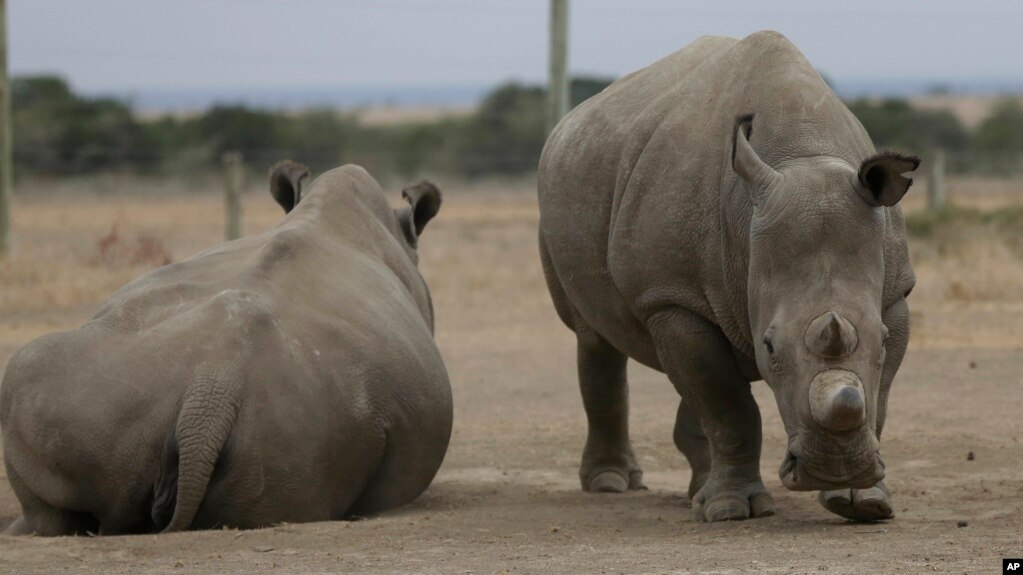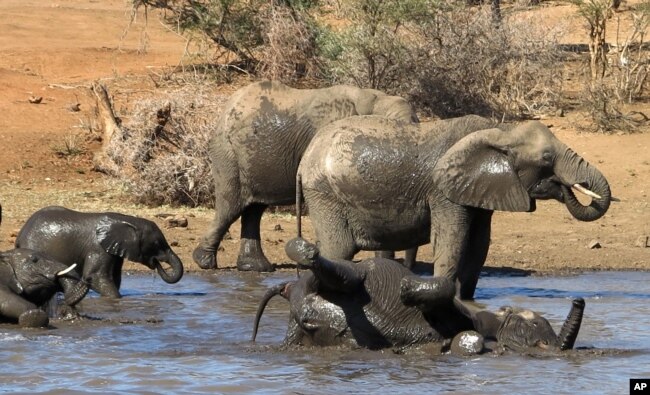Documentary 'The Last Animals' Sheds Light on Rhino, Elephant Extinction...

'The Last Animals' Sheds Light on Rhino, Elephant Extinction
March 25, 2018 | WASHINGTON — The death this month of 45-year-old Sudan, the last male northern white rhino on the planet, rings the alarm on the imminent extinction of other endangered animals. The news also gives a renewed urgency to Kate Brooks' documentary The Last Animals, about the threat poaching poses to the dwindling populations of rhinos and elephants.
'The Last Animals' Sheds Light on Rhino, Elephant Extinction
March 25, 2018 | WASHINGTON — The death this month of 45-year-old Sudan, the last male northern white rhino on the planet, rings the alarm on the imminent extinction of other endangered animals. The news also gives a renewed urgency to Kate Brooks' documentary The Last Animals, about the threat poaching poses to the dwindling populations of rhinos and elephants.
In an interview with the Voice of America, filmmaker Kate Brooks spoke about the impact of poachers on the remaining rhinos. “Southern white rhino population is around 20,000. With northern whites, the number is down to three, and the last male, Sudan, is hovering around the natural age of death and not in very good health.” The day after this interview, Sudan died. Kate Brooks’ film The Last Animals was one of the 130 films showcased at the Environmental Film Festival in the nation’s capital. According to Director of Programming Brad Forder, Brooks’ film fit right in with the festival’s theme this year on Stories from the Frontlines, about environmental heroes, who are protecting the planet, wildlife and endangered species. In the case of The Last Animals, the heroes are the park rangers trying to protect the dwindling herds of rhinos and elephants in African national parks.

Fatu and Najin, left, the only two female northern white rhinos left in the world, graze where they are kept for observation, at the Ol Pejeta Conservancy in Laikipia county in Kenya
Brooks says in the past 10 years, more than a thousand rangers have been killed in clashes with poachers in conservancies and parks across Africa. She filmed deadly encounters at Garamba National Park in Democratic Republic of the Congo. She explained, “The decision to go to the Garamba National Park was really based on the fact that it is a place where there is a true intersection with the ivory trade and terrorism. That is the last place the white northern rhinos lived in the wild, and it is the very front lines of the ivory wars where people, poachers and rangers, are being killed.” The superstitious belief that rhino horn is an aphrodisiac or can cure cancer makes it the world’s most expensive animal commodity, and, in many parts of the world, it funds terrorist organizations. Despite an international ban on trade in ivory and rhino horn, Brooks says illegal trading continues, particularly in Asia. “While filming in Vietnam, when we were boarding our flight to China, there was lots of individuals just filling up their suitcases, putting ivory (jewelry) on, maybe covering it up with their clothes but getting on the flight and walking straight through customs.”
Brooks’ film, The Last Animals, advocates stricter measures worldwide against that trade. She also hopes that documentaries like hers will inform people of the devastating consequences of rhino horn and ivory trading. “I think the global consciousness is rising. Domestic ivory bans are going into effect and while South Africa might be one of the few countries left in the world where it’s okay to trade rhino horn domestically and be a country that’s still pushing to trade ivory internationally, increasingly, nobody wants it.” Trophy, a documentary by Christina Clusiau and Shaul Schwarz, looks at South Africa’s policies,making the case that only legalized rhino horn “breeding,” which means trimming the horns off the animals every few years, can stop poaching and save rhinos. “That’s kind of the idea of utilizing animals in this ‘if it pays, it stays’ way,” says Schwarz. “Now, is that the answer? I don't know. I’m here to raise questions.” One of the advocates of legalized rhino horn trade showcased in Trophy is South African farmer John Hume.

A herd of elephants swim and drink water in the Kruger National Park, South Africa
In the documentary, he holds a horn and explains, “On the black market, the retail value of this horn would be a quarter million dollars. The operation is painless. It will take two years before you guys do the same procedure again. All I need is for it to be legal.” To back up his position, he points out, “Give me one animal that has gone extinct while farmers are breeding it and making money out of it.” Brooks disagrees. “South Africa recently legalized the domestic rhino horn trade. I don’t think it’s a solution. It’s actually creating the message that somehow it’s okay again. And all of that aside, there is also the issue of, is it humane? To even treat an animal in that way?' One of the things you see in The Last Animals is that sometimes animals can be sedated and they don't always wake up.” While the debate continues, endangered animals die. In the past 10 years, poachers have killed 150,000 elephants. Brooks says, the year she was born, in Garamba National Park alone, there were 22,000 elephants. Today, only 1,200 remain. The numbers are bleaker for the northern white rhinos. After Sudan's death, only two females remain.
'The Last Animals' Sheds Light on Rhino, Elephant Extinction

